This first image is a reminder of what we started with. If you recall, we are still pretty much living in the bus at the back of the building. The roof needs replacing, but at the moment that’s beyond our budget. At this stage we have removed all the interior paneling, and treated the structural joists, roofbeams, and floorboards. The doors and windows are totally rotten, the glass hanging on by a thread.

This is the original front door, which had been held closed for thirty years with a gas bottle. The stones are to stop rain and wind blasting in through the holes.
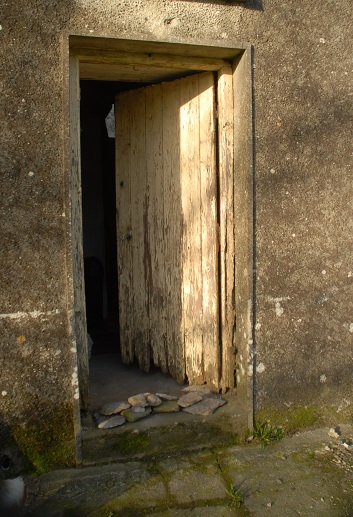
This is one of the original windows, the base of which fell off when we removed it. All the sashes had gone, so the top of each window had been open to the elements for years.

I acquired ten windows from a builder who had removed them from a modern house because the new owner didn’t like them! One fitted in the Tigin (the little building) as if made for the job, but for the main house we weren’t so lucky. The windows are a couple of inches wider than the originals, and eight inches taller, so on the ground floor we have to cut down eight inches and lower the sills. We do the living room window first. Seeing it completed, it’s hard to recall the mess.

This is the only room that is in any way sound. With a window, a door, and a log fire, it is absolute heaven, though we are still using the bus as a bedroom at this time.

The kitchen. Well… it will be one day! The end wall is wet through, a job for another day. This image shows the extent of the work required to cut out the old window, widen the aperture, and lower the sill level.

Things are going pretty well, until we hit this massive boulder at the base.

One measly inch too high – out it has to come!
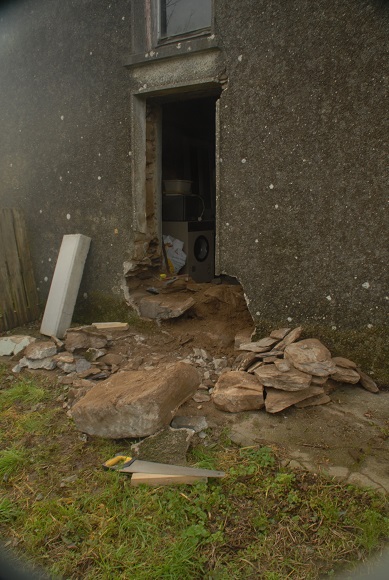
Then the wall needs to be repaired up to sill level. As you can see, the house is built of field stones and soil. It’s an amazing piece of folk-engineering. All the farm houses were built in this manner, and will probably outlive some of the modern dwellings thrown up in cities. The walls have a ‘batter’, which means they are wider at the base than the top.

Finally the new window is wedged in place, secured, and sealed with expanding foam.

The outside is made good, and luckily the weather has been kind.
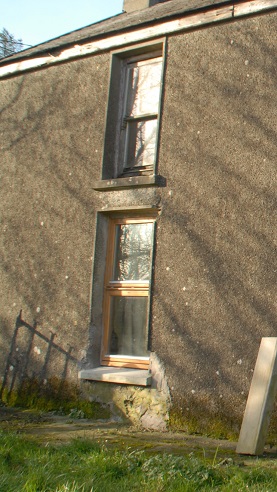
Then the inside is made good…

And finally, the finishing touches: a window sill and wood cladding. Once finished, it looks as if it has always been here. Bernie gives it his seal of approval.

In the meantime, when I’m not being a builder’s labourer, I plug away with some carpentry. The cupboard is useful, but has the second job of shoring up the floor joists to support the water tank that will be housed in the bedroom above.

The downstairs windows in, we begin upstairs. This presents a different problem as the windows are eight inches too tall! So, we just squeeze them in under the eaves, and plan to build small gables over each one when we are finally able to re-roof. There is a choice as to whether to make the centre bedroom into a study or a bathroom. Even though it means waiting another couple of years for a bathroom, the study wins, as we’re thinking longer term. This room has a view out over the garden, and across the valley. A study on the north side at ground level with no view doesn’t appeal.
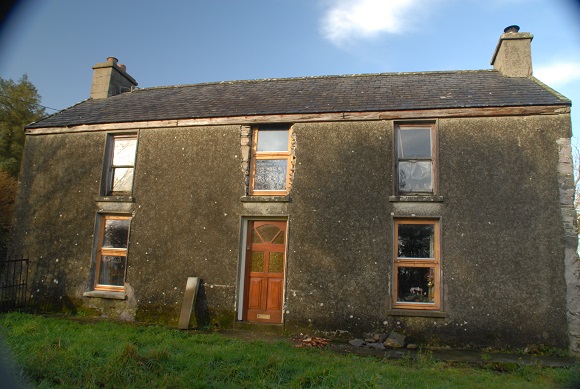
The windows are replaced over two summers, and in the meantime other work is going on. The extension is being constructed, as are the sheep-shed and pigsties. We rebuild the chimneys, and line the flues with clay pipes, and turn the field into a garden. We are never at a loss for work, though it’s always dependent on the finances available from one month to the next.

This is the inside of one of the bedrooms. Here, you can see the flue being lined, and the window ready to be fitted.
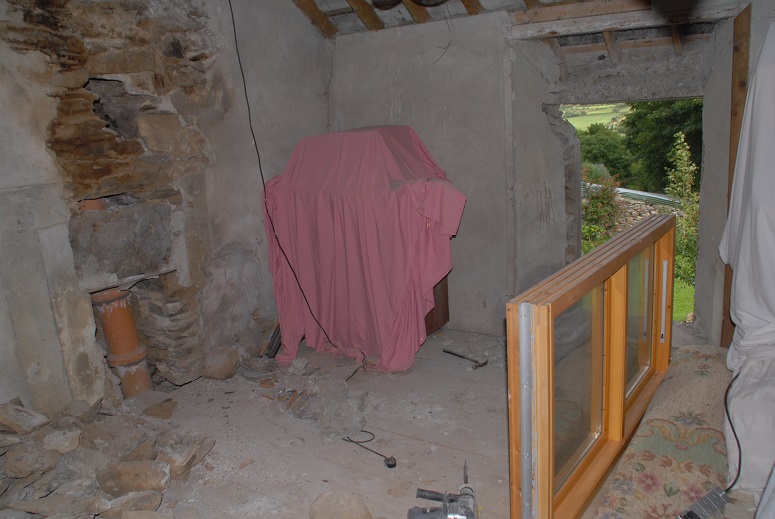
And finally, the last window is in situ.
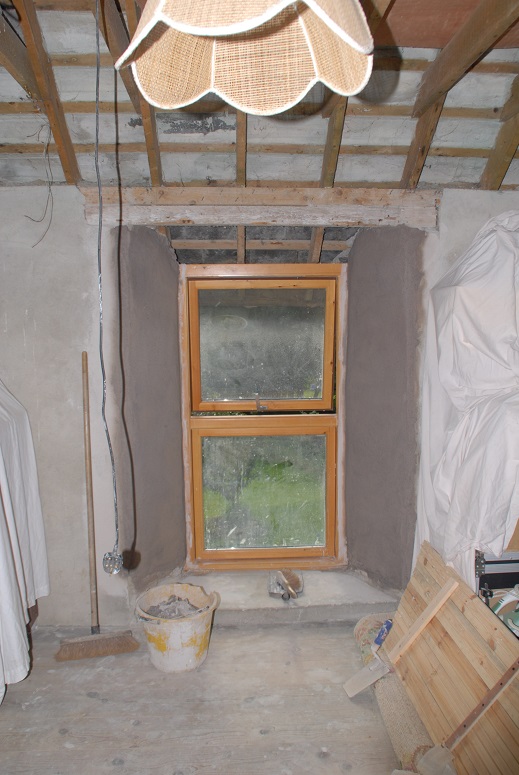
All the windows in place, it remains to make good the concrete surrounds, and one day slap on a coat of paint.
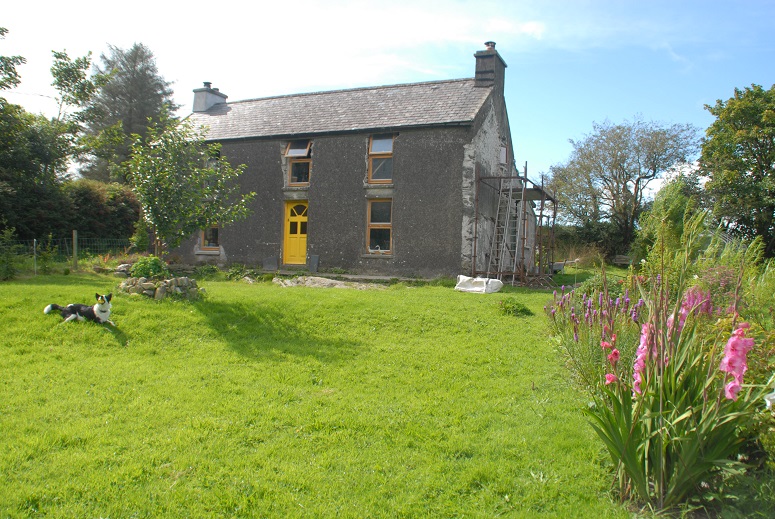
The house still has a neglected air, and there is much work to be done. And all the while, we keep this vision of the future in our mind’s eye:
